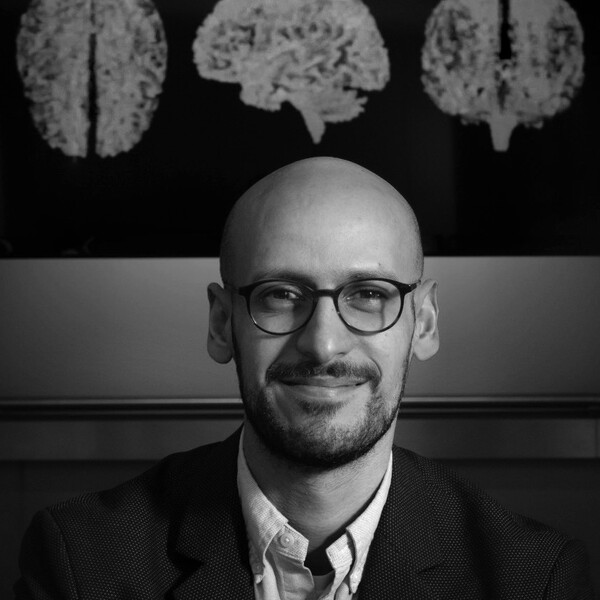Maged Goubran
PhD, University of Western Ontario

Qualification
- Postdoctoral fellow, Radiology / Neuroscience, Stanford University
- Research scholar, Neurology, McGill University
- PhD, Biomedical Engineering (Imaging), Western University
At a Glance
- Computational neuroscience
- Machine learning/artificial intelligence
- Histopathology & tissue clearing
- Brain networks & connectomics
- Neuromodulation
Short Bio
Dr. Goubran is a Scientist in the Hurvitz Brain Sciences research program & Physical Sciences platform at the Sunnybrook Research Institute, and Assistant Professor in the Department of Medical Biophysics at the University of Toronto. He earned his PhD in Biomedical Engineering with a specialization in Medical Imaging at the Robarts Research Institute at Western University. He then went on to pursue his postdoctoral training at the Department of Radiology and the Neuroscience Program at Stanford University. His work combines translational and basic science research, with the overarching aim of developing novel computational and imaging tools to probe and predict circuit alterations in neurological disorders, including Alzheimer’s disease, stroke and traumatic brain injury.
Research Synopsis
Dr. Goubran’s research interests combine translational and basic science research. He aims to develop novel computational, machine learning and imaging tools for interrogating brain circuits across resolution scales and modelling brain pathology. He is particularly interested in studying the underlying mechanisms and pathways behind disease progression of neurological and cerebrovascular disorders that involve disruption of neural circuits, including Alzheimer’s disease (AD) and stroke.
As part of his postdoctoral fellowship at Stanford University, Dr. Goubran developed a computational pipeline for investigating connectome dynamics in 3D cleared tissue and MRI in animal models, working with the pioneers of tissue clearing and optogenetics. His tools are being used by many collaborating labs internationally. At Sunnybrook, he has been developing and using artificial intelligence (AI) techniques for improved structural and lesion segmentation in populations with extensive brain atrophy. He is also working on creating diagnostic models of neurogenerative diseases from rich imaging and clinical data to aid in the great challenge of early and accurate diagnosis.
Dr. Goubran’s research focus includes multi-parametric and morphological analysis of the hippocampus and its subregions in AD. He is interested in studying human hippocampal circuit remodelling and developing imaging approaches to help predict hippocampal subregion pathology from in vivo imaging. Understanding how cellular and structural changes occur in the connected regions to the ischemic core in stroke is important for developing targeted therapies. Dr. Goubran is applying advanced diffusion and functional imaging, in combination with computational methods in preclinical models, to investigate the spatiotemporal effects of stroke on remote connected areas. Another line of his research focuses on modelling stroke outcomes with AI, to predict who will have cognitive and motor impairments.
Recent Publications
- Goubran, M., Leuze, C., Hsueh, B., Aswendt, M., Ye, L., Tian, Q., Cheng, M.Y., Crow, A., Steinberg, G.K., McNab, J.A., Deisseroth, K., and Zeineh, M. “Multimodal image registration and connectivity analysis for integration of connectomic data from microscopy to MRI.” Nature Communications. 2019. In-Press. doi:10.1038/s41467-019-13374-0. Epub ahead of print.
- Goubran M, Ntiri E, Akhavein H, Holmes M, Nestor S, Ramirez J, Adamo S, Gao F, Ozzoude M, Scott C, Martel A, Swardfager W, Masellis M, Swartz R, MacIntosh B and Black SE. Hippocampal segmentation for atrophied brains using three-dimensional convolutional neural networks. Hum Brain Mapp. 2019. In-Press. doi: 10.1002/hbm.24811. Epub ahead of print.
- Parivash S, Goubran M, Rezaii P, Bian W, Boldt B, Do Huy, Douglas D, Wilson E, Mitchell L, Parekh M, Anderson S, Grant G and Zeineh M. Longitudinal changes in hippocampal subfield volume associated with collegiate football. J Neurotrauma. 2019 Jun 17. doi: 10.1089/neu.2018.6357. Epub ahead of print.
- Federau C, Goubran M, Rosenberg J, Henderson J, Halpern CH, Santini V, Wintermark M, Butts Pauly K and Ghanouni P. Transcranial MRI-guided high-intensity focused ultrasound for treatment of essential tremor: Definition of an optimal lesion size, socalization, and thermal dose. J Magn Reson Imaging. 2018 Jul;48(1):58–65. doi: 10.1002/jmri.25878. Epub 2017 Oct 27.
- Goubran M, Bernhardt B, Cantor-Rivera D, Lau JC, Blinston C, Hammond R, de Ribaupierre S, Burneo J, Mirsattari S, Steven D, Parrent A, Bernasconi A, Bernasconi N, Peters T and Khan AR. In-vivo MRI signatures of hippocampal subfield pathology in intractable epilepsy. Hum Brain Mapp. 2016 Mar;37(3):1103–19. doi: 10.1002/hbm.23090. Epub 2015 Dec 17.
- Goubran M, Hammond R, de Ribaupierre S, Burneo J, Mirsattari S, Steven D, Parrent A, Peters T and Khan AR. Magnetic Resonance Imaging and histology correlation in the neocortex of temporal lobe epilepsy. Ann Neurol. 2015 Feb;77(2):237–50. doi: 10.1002/ana.24318. Epub 2014 Dec 17.
Graduate Students
Ahmadreza Attarpour
Lyndon Boone
Edward Ntiri
Mathew Rozak
